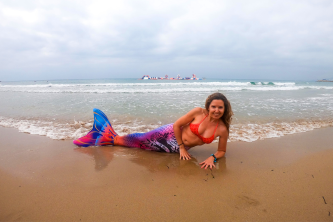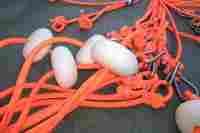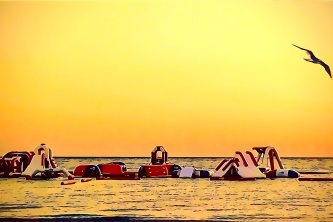
Scouts and Sailors
The epitome of all seaman's knots. Scouts also say rescue sling. For fire fighters it's the rescue node. And the German THW call him anchor stitch. The name Palstek is low German for pile stitch. The Palstek is relatively easy to make - not just for sailors. He securely holds and is usually good to solve after a long and changing load.
First, make a small eye, with the solid part at the bottom. The loose end should be slightly longer than the circumference of the desired loop.
The loose end is pulled through the eye from below - this is how the actual loop of the knot is created. If you “dive” into the eye from the wrong side, no knot will be arise.
Now you put the rope around the fixed end and from the top back through the eye, so that the two ends can look out of the eye in parallel and tightened together.
It is important that you bring the loose end from the right side into the eye and vice versa back through the eye, so that the two rope ends are parallel. Now you take with one hand the pulling end (upper rope), with the other the two parallel lying (the loose end and the parallel part of the loop) and pulls them tight.
When using bungee ropes, the knot can loosen unintentionally due to the stretchability. That's why we recommend additional securing with cable ties.
A little mnemonic
“The snake emerges from the pond, crawls around the tree and dives back into the pond.”
An article by Ingo Popp
Illustrated by Christiane Westhoff
© 2019 aquafun
March 11, 2019


